Until
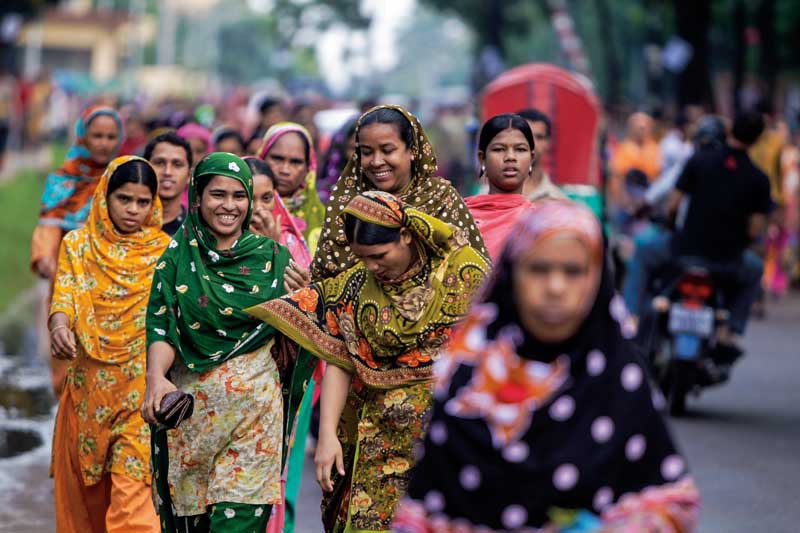
Drik Calendar?2014
Well-worn flip flops walk briskly along well-travelled footpaths. Brightly coloured bangles jangle against tiffin carriers. Clutching vanity bags with lipstick, mobile phones and perhaps a photograph, they smile and chatter, take a quick glance at their watch. These are the new professionals. Proud, confident, skilled and determined to take charge of their destiny.
The garment industry is undeniably a significant force in Bangladesh. Generating some three-quarters of its foreign exchange earnings and employing some three million women, the sector has provided alternatives for working class women. Led to the nation?s robust economic growth.
The repression of labour movements and woefully inadequate working conditions have left festering wounds resulting in stoppages and unrest. While not all owners are guilty, large numbers have taken the simple route of profit at all costs. Culpability lies at all levels. The end users who don cheap clothes without insisting on ethical employment conditions, buyers and retailers who turn a blind eye to faulty production practices, factory owners who live plush lives while ignoring the inhumanity of working conditions and below-poverty wages and governments who cater for a powerful owner lobby while ignoring and repressing workers.
Recent disasters are by no means the only accidents. Neither are these factories the only unsafe ones. It is time to come clean. Sheltering guilty owners does nothing to improve the health of the industry. It also undermines the owners who do run safe factories with good working conditions, and provide a fair wage.
Until the ?business plan? includes decent living conditions for workers, until workers are recognised as fellow human beings, until death caused by willful negligence is recognised as homicide and appropriate punishment meted out – the Ranas and Tazreens will be mere flagposts? along? a path mapped by workers? blood.
Until those who profit from worker?s toil are prepared to wipe the worker?s brow, the clean clothes we wear will continue to bear the indelible blood stains of our lost brothers and sisters.
—————————————————————————————————————-
The class difference between owners and workers, the power relationship between buyers and producers and the nexus between the owners and the government are reinforced through complex documents, generally in English, that determine the terms of engagement. These documents help preserve the 33-fold wage difference between a Bangladeshi worker and one in the US. Present day exploitative conditions remind us of earlier times when trade in Indian cotton textiles enabled Europeans to purchase slaves in pre-colonial Africa and helped develop the Atlantic economy in the eighteenth century.
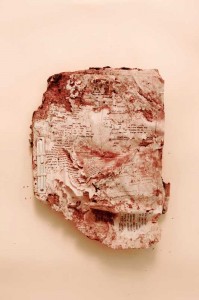
?Anu Muhammad, ?Bangladesh RMG: Global chain of profit and deprivation,? opinion.bdnews24.com, May 17, 2013 and, Kazuo Kobayashi, ?Indian cotton textiles in the eighteenth-century Atlantic economy,? www.blogs.lse.ac.uk, June 27, 2013
Abir Abdullah, ASM Rezaur Rahman, Binimoy Printers Ltd., Doli Akter, Emad Uddin Fazlullah, Md. Moinul Hassan Tapu, Md. Mostafa Sorower, Md. Shafiul Azam Khan Tushar, Munem Wasif, Rabi Shankar Ain, Rahnuma Ahmed, Saydia Gulrukh, Shahidul Alam and Tanzim Wahab were involved in the production of this calendar.
—————————————————————————————————————–
January?I borrowed them, the sari,?necklace and bangles?from my friend Mita,?to get my studio photo taken.?? Sumaya
Mita died in the Tazreen factory fire. Sumaya, a survivor, is on her deathbed as this calendar goes to press, dying due to an aggressive and rapidly escalating tumor behind her right eye, possibly triggered by the chemical fumes she inhaled when trapped at Tazreen.
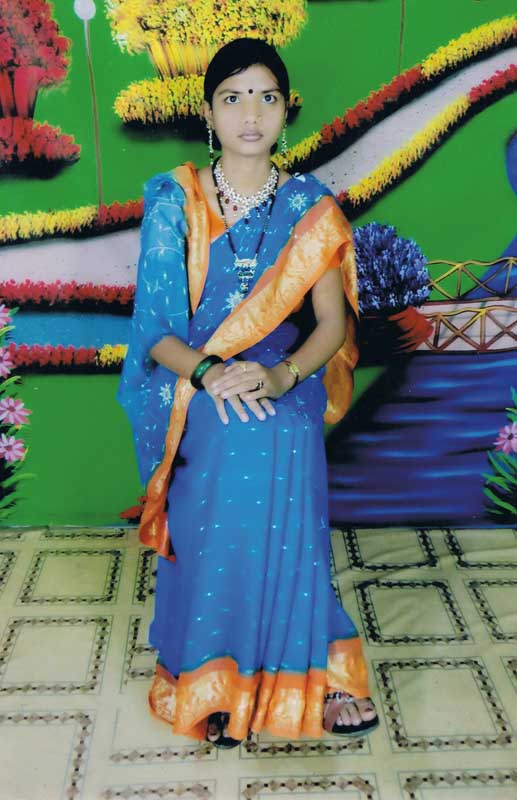
February?The garment industry employs more than three million workers, mostly women.
In the early morning,?Dhaka becomes?a city of women.?? Jeremy Seabrook

March?Things are a bit better now, says [Mushrefa] Mishu, who has been organising workers, and fighting for their rights for the last thirteen years.?It was far worse in the beginning.?? from ?She had a dream,? 2008
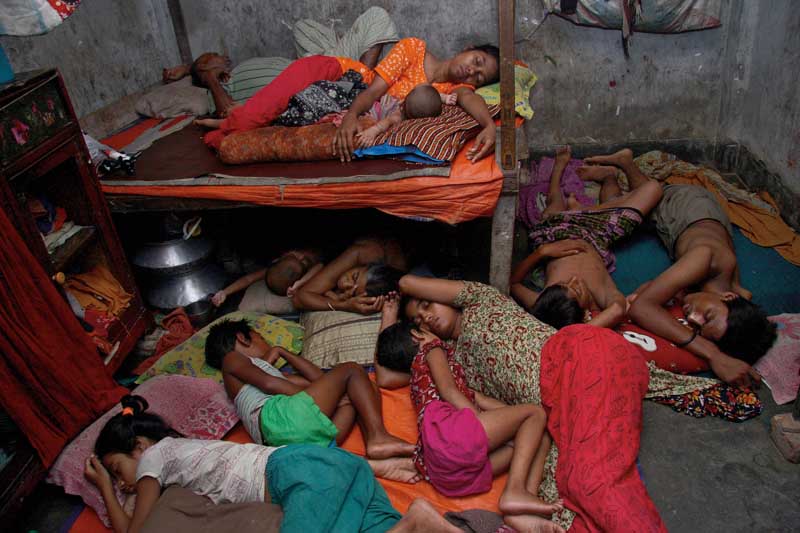
April?Salma, barely twenty, felt ill, and wanted to go home. Forced to work overtime,? she crawled under the machine at night to rest. The next day, she died?at home.
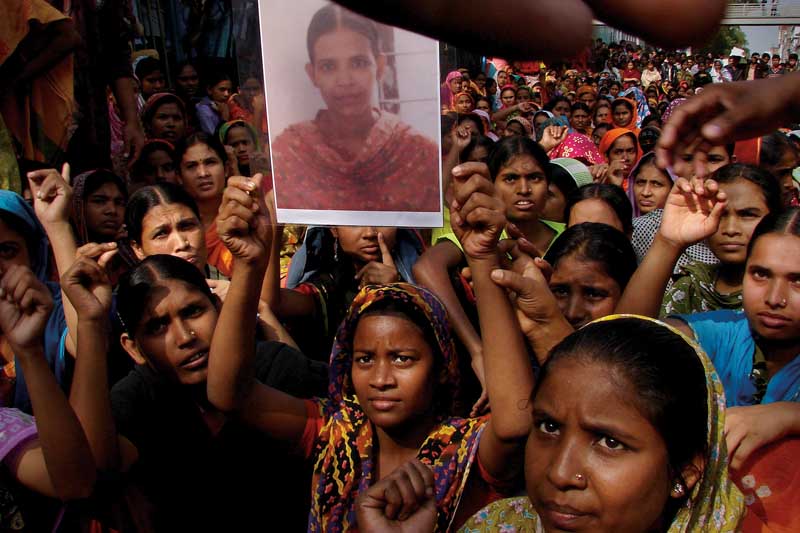
May?As the stench of rotting corpses lodged in the crevices of Rana Plaza wafts over the country, it marks out the vast majority ? grieving for [their] brothers and sisters sacrificed at the altar of capital ? from the small minority, who wield political and economic power, and feed off human flesh.?? rahnuma ahmed
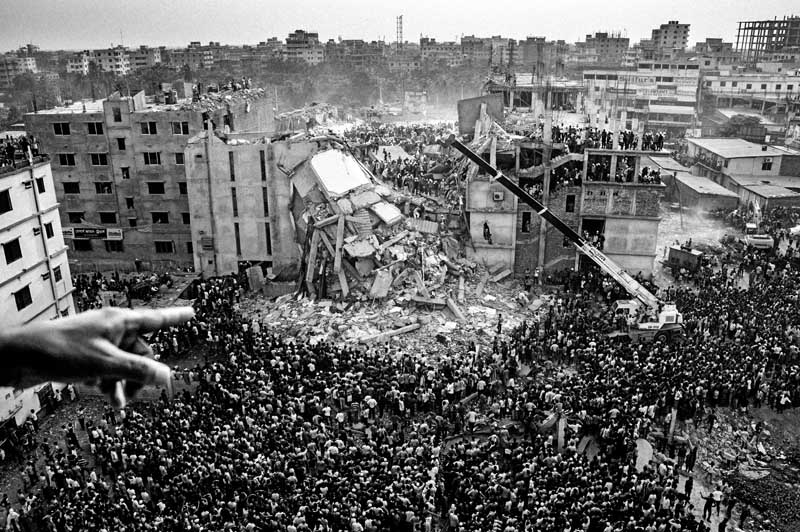
June?This image, while deeply disturbing,?is also hauntingly beautiful.?An embrace in death, its tenderness?rises above the rubble to touch us?where we are most vulnerable.?By making it personal, it refuses to?let go. This is a photograph that?will torment us in our dreams.?Quietly it tells us. Never again.?? Shahidul Alam
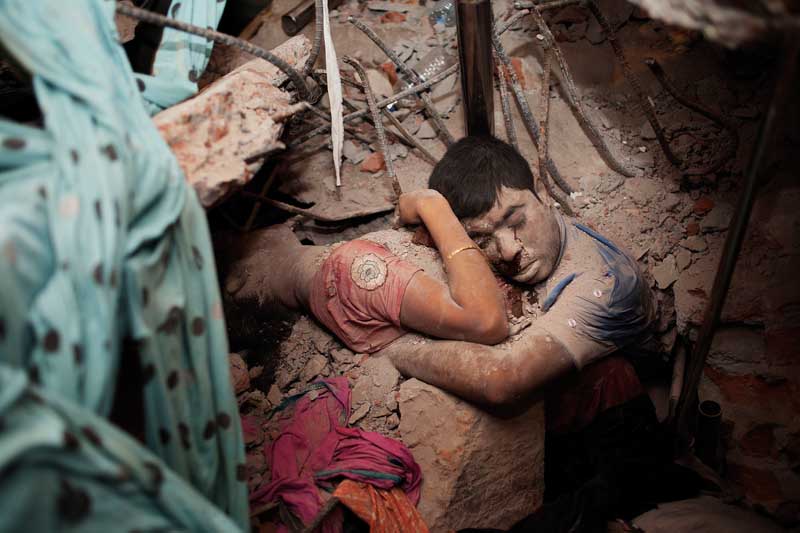
July?The struggle of man [sic] against power is the struggle of memory against forgetting.?? Milan Kundera
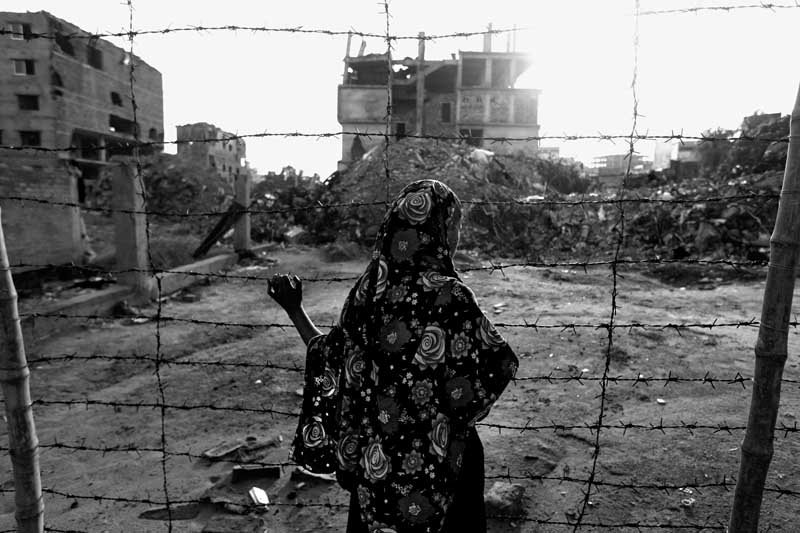
August?How long do family members wait for those ?missing???An ember still burns?refusing to be gutted out.?What if…?
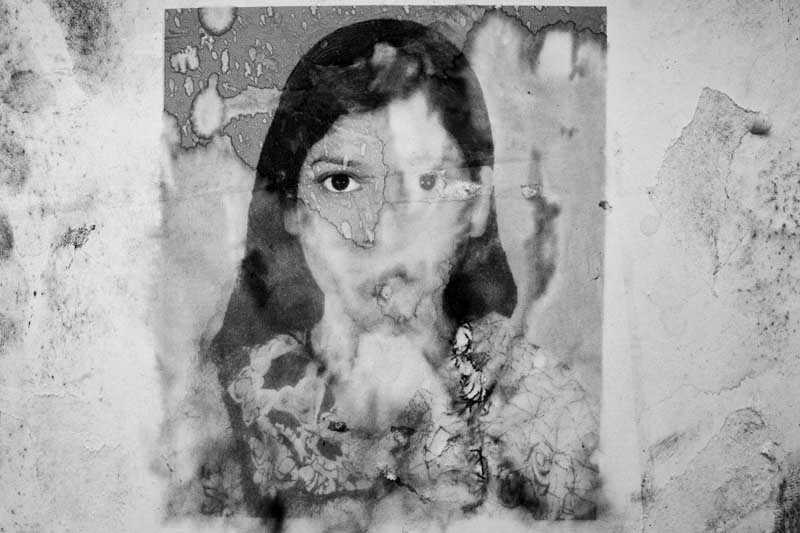
September?It is of course a tragedy of enormous proportions but by terming it (only) a ?tragedy,? we shield those criminally responsible. It leads us to think, such is the destiny of the poor and the illiterate, no one is to blame. But is that true?

October?We were thrilled to be invited to?perform at the factory site…?[but] we were a bit scared…?to perform as part of a?movement which is up?against such overwhelming?odds… We did the show,?we joined the procession,?we felt we belonged.?? Saiful Islam Jarnal, Prachyanat
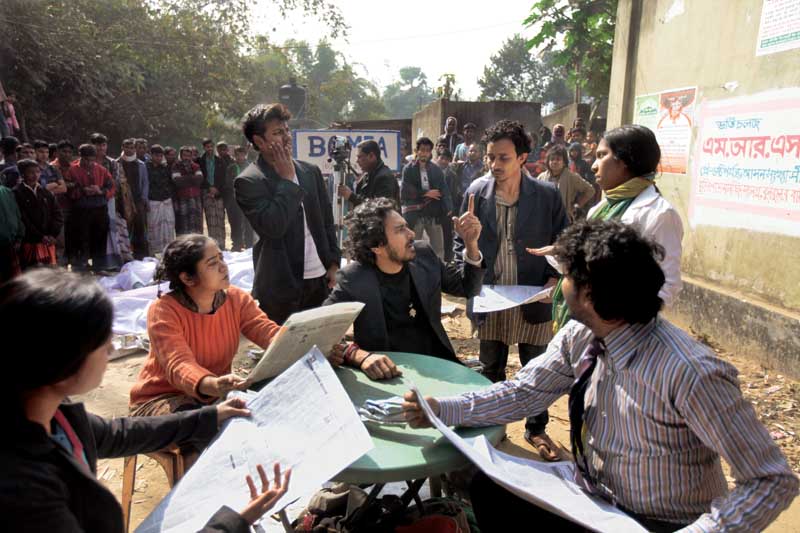
Photo ? AM Ahad
November?Our main problem with the?enormously wealthy and?all-powerful Bangladesh?Garment Manufacturers and?Exporters Association?(BGMEA), is that it rushes?to protect killer factory-owners?whenever factory fires or other?disasters occur. For the garment?industry to survive, the BGMEA?must fundamentally change its?philosophy and agenda.?? Rokeya Bahini
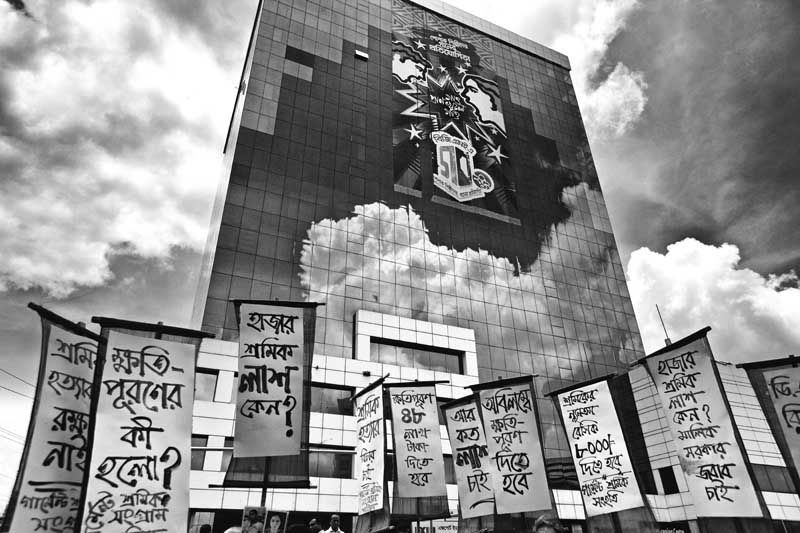
December?An amorous secret shared??A faux pas??A half forgotten nothing??It is joy stolen from the rubble.?Life celebrated, against all odds.?Defiance till the last.?? Shahidul Alam
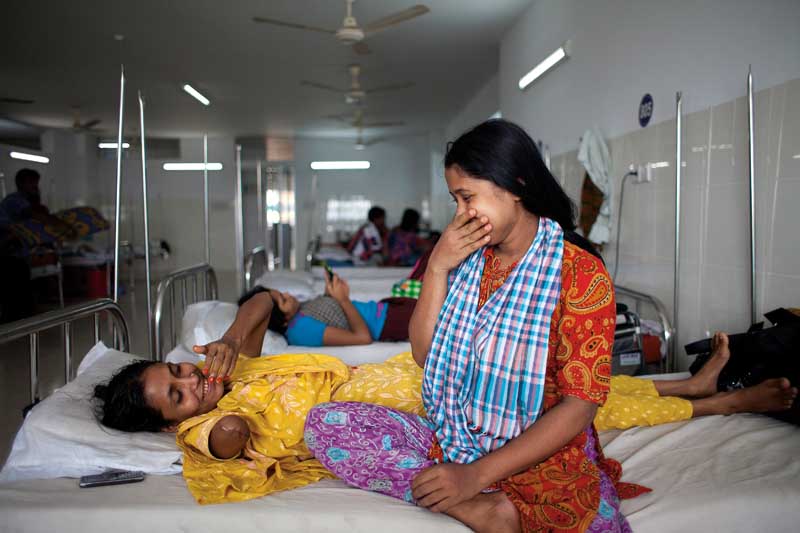

my heart is with you..